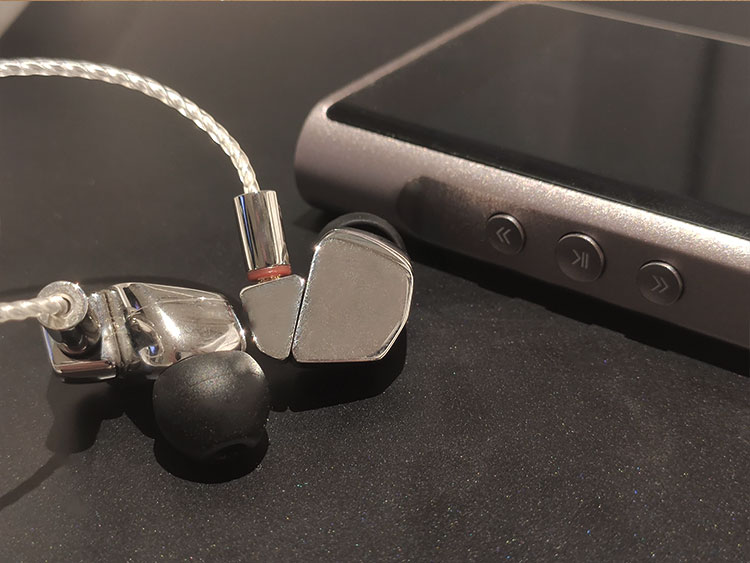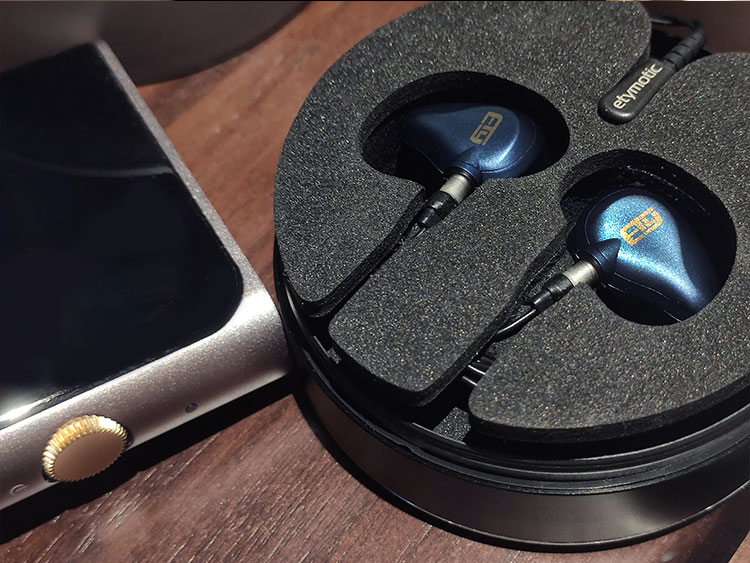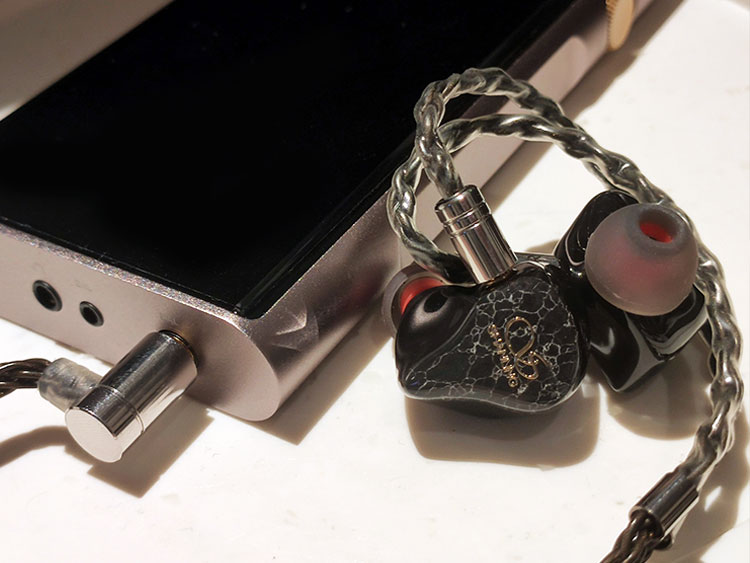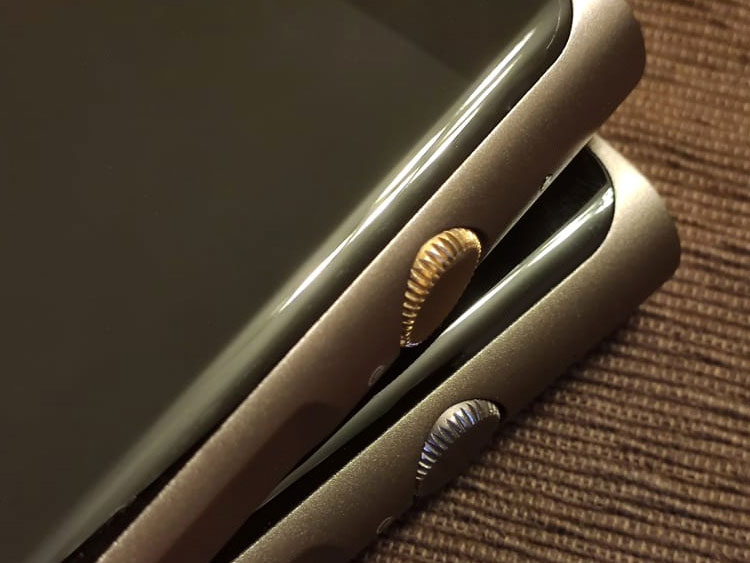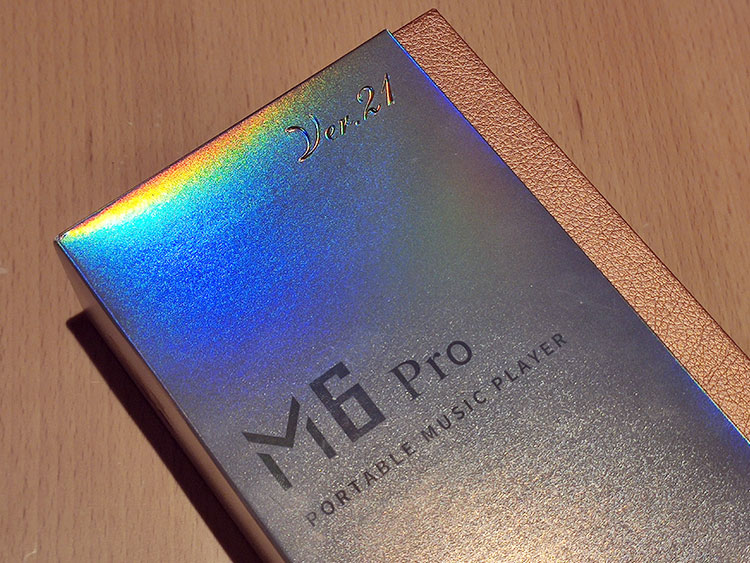Synergy
Being powerful, neutral in tuning, and natural in tonality, the M6 Pro 21 can drive anything from sensitive IEMs to bigger cans well. There is good synergy matching with darker sounding gears.
The output impedance is very low on this device yet it does not compromise the dynamic range and with sensitive earphones. The dynamics are still strong and the midrange is well defined without the bass bleeding over.
Pairings
Final Audio A8000
I am using the A8000 to test the output power on the M6 Pro 21, also to check if it will be overly sharp with the M6 Pro 21 which has the upper vocal frequencies more forward in positioning.
The result of this combo is surprisingly satisfying, with excellent transparency and tons of energy in the treble along with very rich texture. The bass is very tight, impacting speedily with a fast decay, and still manages to pull out some rumble in the sub-bass region when needed.
The midrange frequency is slightly laid back and this works well with orchestras, especially bigger ensembles, letting you focus on the big picture and not just the midrange frequencies.
With vocal works in the output lighter voices are well separated from the bass, slightly pushed back, and works very well with operas or brighter voices. To me, it sounds overly clean for R’n’B, Pop, or rock that a more dynamic bass and fuller mids to be engaging. It may also work for those who want to focus on the guitars or overtones.
Overall, the combo sounds very clean and dense, even on higher-gain, the image is still very precise and controlled. It is also impressively responsive with fast synthesized music.
Etymotic EVO
The Etymotic EVO is a big surprise from Etymotic, which is famous for its single BA designs that sound highly transparent and accurate. Moving on to 3BA design they still manage to do a very swift-sounding articulated tuning.
Though forward in the higher frequencies the bass is not absent and the EVO sounds dynamic and energetic, especially when using the tri-flanges that come with it. With foams, the bass gets fuller and airier, though not as precisely imaged.
On lowest gain, the EVO sounds very clean and fully powered already and on high gain or turbo gain it is getting a bit too sharp, so I am listening on lower gain only.
With Kpop the vocal delivery is stellar, so clean, natural, and smooth. The texture and accuracy on the M6 Pro 21 work very well with the EVO on foams, and the two are strengthening the traits of each other, sounding very tight and clean together without leaning, peaking.
Overall, very smooth delivery and exciting treble make this combo a great match with lighter voices, especially female vocals. Violins and flutes also sound extremely smooth and dense without getting out of control. However, the exciting treble might make this combo a bit tiring for longer listening periods.
Shanling ME700
With a lot of power on the Shanling M6 Pro 21, we have to put the power-hungry ME700 to test. The warmly tuned ME700 may sound bloated on small outputs but this is not the case on the M6 Pro 21, which has a lot of power to offer.
On the 4.4mm output the ME700 seems to be the best match so far, with deep, big bass and good treble power to balance the bass presence. Both female and male vocals sound full and more upfront, also you can hear beautiful overtones.
The crisp texture on the M6 Pro 21 allows voices to offer up some good energy and authority while stretching the staging wide. If you want a player that can do the ME700 justice then this or the M8 would be the best matches.
The strong power and texture in the output help maintain better tonal balance, it works similarly with some other IEMs that have fatter mid-bass where the M6 Pro 21 is adding good control, facelifting the treble, and kicking good energy into the output, making it smooth and engaging.
Select Comparisons
Shanling M6 Version 21
Putting the M6 Version 21 and M6 Pro Verison 21 head-to-head is an interesting comparison as the M6 Version 21 is quite strong in performance after the upgrade but also having some similarities in tuning. When you listen closely you will notice the level of control, resolution, power, and dynamics is all one step better on the M6 Pro 21.
The M6 21 takes the M6 Pro approach to sound more outlined and textured in the treble, also doesn’t push the vocal as forward-like as the original M6, having the silhouette of the M8 and being more laid back and resolving for vocals.
Switching to M6 Pro 21 the treble is even more polished as well as extension and control. You can hear more layering and detail and it is more effortless on the M6 Pro 21sounding more euphonic and less bloated.
With the M6 Version 21, there is not as much density and the treble is not as refined and textured, so the dynamics and the imaging are not as strong. While the M6 Pro 21 is stronger in extracting details and output power, the M6 Version 21 is good to go if you want a more easy-going signature.
If you want to strive for superior density, texture, energy in both the treble and bass, and the ability to handle more complexity in the mix effortlessly, the M6 Pro 21 won’t hurt the bank either, and it will get you double the MQA unfolding power.
FiiO M11 Plus LTD
The FiiO M11 Plus LTD is another result of the fire that broke out at the AKM chipset plant with its limited run of AKM DAC chipset inside.
The M11 Plus LTD has a much faster processor, more up-to-date Android also and an AnTuTu benchmark that is much higher with the FiiO DAP.
However, the caveat is that even when there is 50% more battery capacity than the M6 Pro 21, the playback time is noticeably a few hours less. Furthermore, neglecting the specs, you can hear the M6 Pro 21 stronger output power, as well as having more definition in both the outputs and line out.
The density in the whole frequency spectrum, especially the bass is also stronger on the M6 Pro 21, and on the highest gain level, it is displaying better control without letting the image and upper vocal frequencies run wild. Putting it simply the M11 Plus LTD sounds more light and joyful while the M6 Pro 21 sounds denser and more elegant.
Tonally, the M6 Pro 21 is slightly more v-shaped and comparatively the M11 Plus LTD sounds smoother in the midrange frequencies. As such, I consider the M6 Pro 21 stronger in extracting details and handling more complex arrangements.
The M11 Plus LTD seems more forgiving and less aggressive in the treble being slightly more rounded but considering it is burnt in for a much longer time the M6 Pro 21 could get quite close in due course.
Our Verdict
With the M6 Pro 21, Shanling has successfully upgraded the design and performance of the original M6 Pro to keep pace with the competition.
Once again it proves that implementation is the key and moving away from AKM chipsets does not stop Shanling from pursuing their signature house sound while strengthening the technical performance of their DAPs.
The M6 Pro 21 is a top-notch player with a great balance between performance and design, whilst retaining their dense, powerful signature tuning. This is a highly completed and elegantly tuned design with great value for the price.
I would also recommend it to any music lovers who are looking for a portable source or to stream with their home system.
Shanling M6 Pro 21 Specifications
- High-performance Dual DAC chipset.
- High-Resolution audio signal decoding support(PCM up to 32-Bit/768kHz, and DSD up to DSD256 natively).
- Open Android V7.1 OS with AGLO(Android Global Lossless Output).
- Three-level Gain: Ultra, High, Low.
- Fluid, Snappy User Interface With Octa-Core Snapdragon 430 SoC.
- 4GB RAM+64GB ROM.
- MicroSD card slot expandable up to 2TB.
- Latest Shanling Music application with HiFi cloud music library.
- Single DAC and Dual DAC mode.
- Dual-band 2.4G/5GHz Wi-Fi with OTA update support.
- Two-way Hi-Resolution Bluetooth support.
- Bi-Directional USB Type-C port.
- 7″ HD IPS display with crisp image quality.
- Dual Hi-Res audio certification(Hi-Res Audio and Hi-Res Audio Wireless).
Output Parameters (Single-Ended 3.5MM):
- Output power(32 ohm): 20mW@Low gain, 60mW@High gain, 240mW@Ultra-high gain.
- SNR: 124dB.
- Channel separation: 75dB.
- THD+N: 0.0005%.
- Dynamic range: 125dB.
- Output impedance: <0.3 ohm.
Output Parameters (Balanced 2.5MM/4.4MM):
- Output Power(32 ohm): 60mW@Low gain, 240mW@ High gain, 760mW@Ultra-high gain.
- SNR: 126dB.
- Channel Separation: 110dB.
- Dynamic Range: 124dB.
- THD+N: 0.0005%.
- Output impedance: <0.6 ohm
Battery Parameters
- Capacity: 4000mAh.
- Playback: Up to 16H on single-DAC mode, Up to 13H on Dual-DAC.
- Standby Time: Up to 36H.


